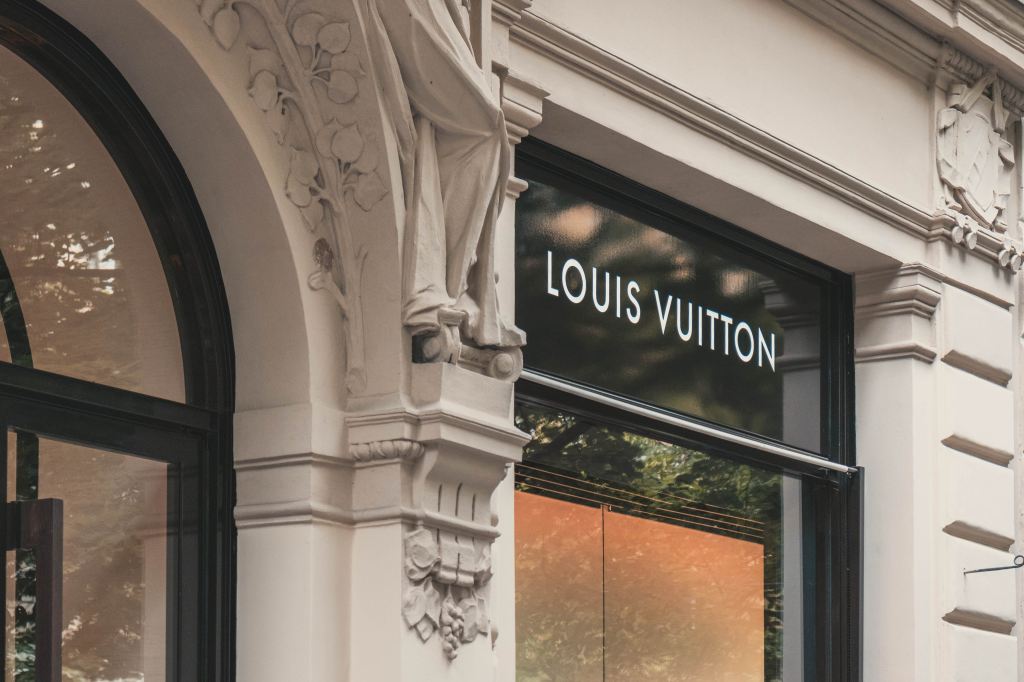Fashion Briefing: What are the brand advantages of owning stores and factories?
This week, we explore the recent supply chain and store acquisitions, and what they mean for brands aiming to future-proof their businesses. Scroll down to use Glossy+ Comments, giving the Glossy+ community the opportunity to join discussions around industry topics.
Luxury and mass brands are increasingly announcing store and factory acquisitions, moving on from lases and reliance on third parties. Although costs are steep for the initial purchase, the long-term benefits allow brands to both use property as part of their investment portfolio and future-proofing components of their business like artisan production.
Most brands still lease their retail locations
Purchasing store real estate is typically limited to giant conglomerates, like LVMH and Kering, that own multiple brands. So far this year, LVMH has purchased retail locations in Champs Elysées in Paris and East Hampton, with the latter requiring a $22 million investment. Meanwhile, LVMH rival Kering has scooped up four store spaces, all in Paris.
On its July 25 earnings call for the second quarter, LVMH chief financial officer Jean-Jacques Guiony said that the company does not have a global strategy of owning its stores, but it is making exceptions for special locations. “Renting is fine,” he said. “In pure financial terms, owning and renting are exactly the same thing, as the value of a property is the discounted value of its rent.”
He said there are some instances where purchasing makes more sense for the long term, particularly as rental fees increase. “There are … some traditional locations where, by experience, we see that the rental fees are growing faster than actually their implied value, in assessing the global property value,” said Guiony. “Then, it makes sense to own it, because there is an opportunity in the market to buy it at a certain price. … In the years to come, if we rent, chances are that the rental cost will go even higher. We are better off owning the property rather than renting it.”
“Purchasing a store is the same as buying a house, so you’re trying to find the best possible location and building structure to keep for 30 years,” said Wayne Kulin, executive chairman at StreetTrend, the parent company of footwear brand P448. To date, StreetTrend has rented its retail locations, while also experimenting with store formats like pop-ups.
“With a purchase, you’re able to control all aspects,” said Kulin. “But renting a store gives you the flexibility to be in a particular location with a known timeline, as well as flexibility on speed; you aren’t tying up long-term capital in real estate.”
“This is about control. Luxury brands want to be less reliant on third parties to drive their sales,” said Neil Saunders, retail analyst at data analytics company GlobalData. “Most luxury players have good enough margins to absorb the costs [of owning stores], despite the expense. They can get gains from greater efficiency by controlling store function and use, lower costs in leveraging a substantial retail network and higher margins by selling direct to consumers.”
“Larger brands will look at [available storefronts] as opportunities to diversify their investment portfolio, as well as to create more vertical supply chain control,” said Nicole Marra, founder and CEO of legal Fixer Advisory Group. “But [successfully] driving those initiatives takes additional bandwidth, expertise and energy within the group that is outside of the core mission of their business.”
For NYC-based contemporary luxury fashion brand Lafayette 148, the answer is still to rent. The brand has seen growth in the past year through its retail network, opening new boutiques in Beverly Hills and Chicago in the past two months.
“Leasing allows us the flexibility to ensure we are always in the right locations and adjacencies to best serve the customer,” said Deirdre Quinn, co-founder and CEO of the brand. “With less investment on the front end, we’re allowed to keep focus on elevating the brand experience.”
However, there are drawbacks. “Although our locations are in such prestigious markets, we do not have the luxury of benefiting from the rise in property values over time,” said Quinn. “Today, the climate is more difficult for both tenants and landlords. While business is strong, rents are increasing.”
Vertical supply chain integration future-proofs artisan skills
At the same time, M&A around luxury fashion production has been active for a while, especially in Italy. Vertical integration means that brands own their own factories, benefitting their business through better economies of scale and decreased logistics costs, while providing security to workers in those areas.
In June, the Prada Group and Ermenegildo Zegna Group announced that, together, they had acquired a 15% stake in the Italian knitwear manufacturer Luigi Fedeli e Figlio. In 2021, the two companies also jointly acquired a majority stake in wool and cashmere supplier Filati Biagioli Modesto. And Burberry invested in an Italian outerwear manufacturer in March.
Meanwhile, LVMH acquired a majority stake in tannery Heng Long Italy and a minority stake in leather and suede manufacturer Robans, both in September 2022. In August 2021, Chanel acquired a majority stake in Italian knitwear company Paima. And Golden Goose acquired its largest supplier, Italian Fashion Team, in October 2022. Fendi took a majority stake in Italian knitwear company Maglificio Matisse in the same month.
But Italy isn’t the only country attracting these investments. In 2019, LVMH opened its third factory in the U.S., in Texas, following its opening of two other factories in California. And in April, Hermès purchased three factories in France. Some heritage brands like Birkenstock and Lafayette 148 also own their own factories, and even DTC brands are considering vertical integration.
Lafayette 148 owns its own factory in China, where it produces all of its garments. Among the advantages that provides the brand are quality control and easy coordination between its design and development teams. “We’re able to strategically react to the evolution of the market with replenishments while providing custom special orders for the VIP customer,” said Quinn.
Although the initial investment in the factory in China was high, it was part of a long-term plan for the business. “We will continue to invest in our production and, most importantly, our people, as we have done since founding the brand 27 years ago,” said Quinn. “It is a huge responsibility to keep a factory both busy and efficient. A company would find itself at a huge disadvantage without experienced manufacturing partners.”
StreetTrend’s P448 footwear relies on local production in Italy, it doesn’t own its own factories. Kulin described the missed opportunity. “Vertical integration allows you to have complete transparency into how your products are priced, as well as control of delivery dates, consistency and quality,” he said.
On the flip side, since every person working in the factory is paid, if a brand is unable to maintain an established pace of production, its fixed costs don’t change,” said Kulin. “The margins are extremely low and finding quality artisans is extremely difficult, as the next generation is not interested in working in factories as a career.”
Brand investment in quality-focused supply chains is necessary to keep local artisan skills alive, which many contemporary and luxury brands rely on. “These brands need these artisans for their production, and their business supports the economy and small communities in and outside of Europe,” said Marra. “Partnering with brands or with the big [conglomerates] on a [supplier investment] is an incredible way to make sure that the heritage is sustained over the generations.”
Ultimately, because of the long-term growth goals of their businesses, luxury houses have the most incentive to establish vertical integration and own their stores. However, as more brands see value in taking control of their production and customer data, investments in stores and production will likely catch on.
Inside our coverage
Gap and LoveShackFancy’s new collab features Ciara in cottagecore sweatshirts
Luxury brands like Prada and Burberry are stepping into the sports arena
Kurt Geiger is putting ‘a lot of capital’ into retail as it expands to the US



:quality(70):focal(1194x328:1204x338)/cloudfront-eu-central-1.images.arcpublishing.com/businessoffashion/JS7OKPWYQBGJ7AHEZQGYS4FYDA.jpg)

